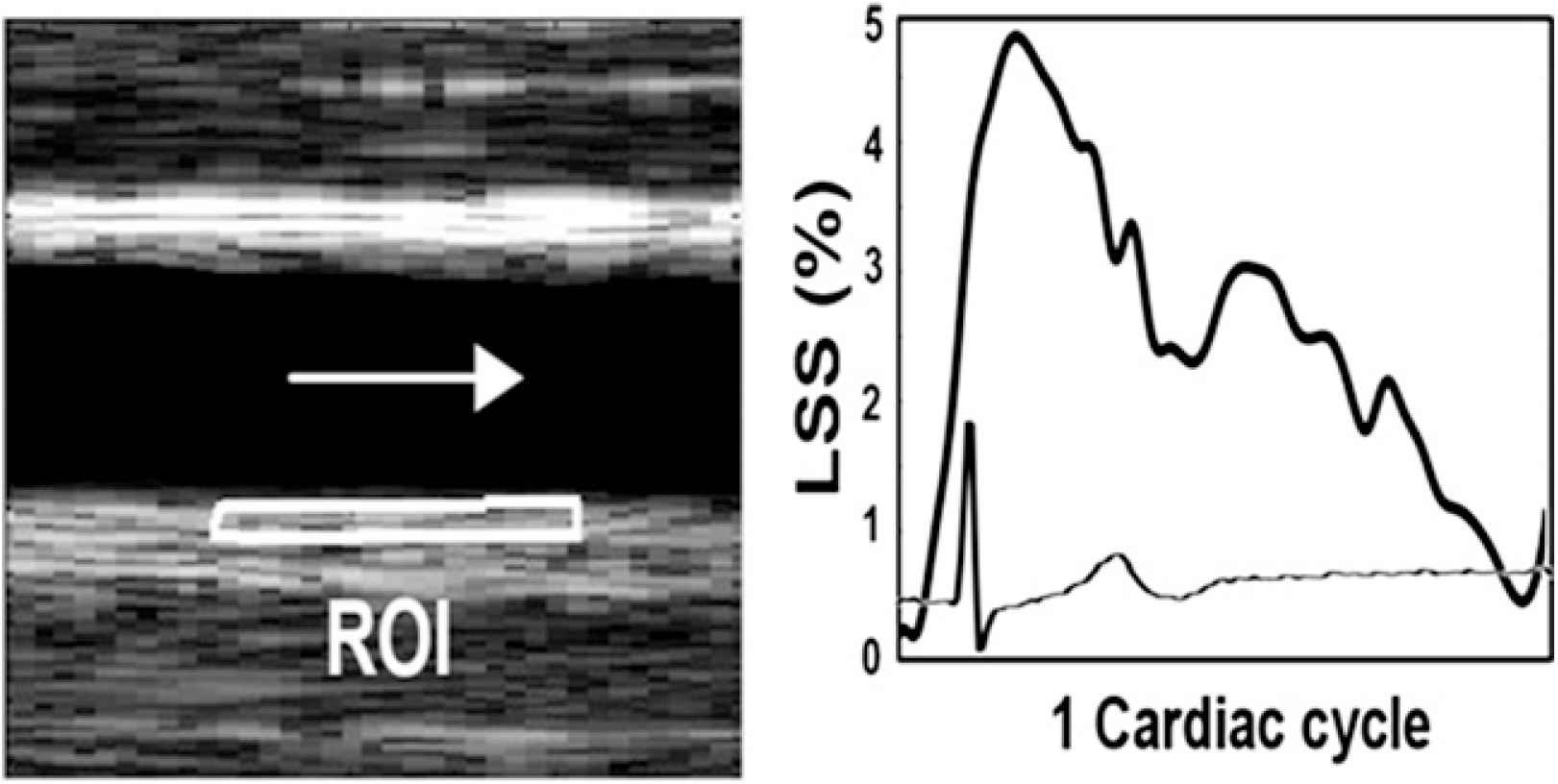P11.09 SHEAR STRAIN IN THE COMMON CAROTID ARTERIAL WALL RELATED TO AGE?
- DOI
- 10.1016/j.artres.2011.10.165How to use a DOI?
- Open Access
- This is an open access article distributed under the CC BY-NC license.
The primary trigger for myocardial infarction and stroke is destabilization of atherosclerotic plaques. It has been hypothesized that locally increased longitudinal shear strain (LSS) facilitates the development of vulnerable plaques [1]. LSS is defined as the change of longitudinal deformation in radial direction. Ultrasound strain imaging allows local assessment of LSS [2].
In 8 asymptomatic volunteers (age: 20–64 yrs.) radiofrequency (rf) ultrasound data of the common carotid artery were acquired in longitudinal direction using a Medison Accuvix V10, equipped with an L5-13 linear array transducer (fc = 8.5 MHz). In each volunteer rf data were acquired at three beam steering angles during multiple cardiac cycles [3]. Simultaneously the ECG-signal was recorded. LSS was estimated in a selected region-of-interest (ROI) using a coarse-to-fine cross correlation based algorithm [3,4].
The estimated shear strain showed a cyclic pattern with an increase during the systolic and a decrease during the diastolic phase. The maximum LSS ranged between 3 and 17% and appeared to decrease with age. This decrease could be related to stiffening of the arterial wall.
This study provides initial normal values of LSS in the common carotid artery. The maximum LSS appears to decrease with age. Further validation in patients will open the door for clinical predictions of plaque rupture.

Cite this article
TY - JOUR AU - T. Idzenga AU - S. Holewijn AU - H.H.G. Hansen AU - C.L. De Korte PY - 2011 DA - 2011/11/29 TI - P11.09 SHEAR STRAIN IN THE COMMON CAROTID ARTERIAL WALL RELATED TO AGE? JO - Artery Research SP - 195 EP - 195 VL - 5 IS - 4 SN - 1876-4401 UR - https://doi.org/10.1016/j.artres.2011.10.165 DO - 10.1016/j.artres.2011.10.165 ID - Idzenga2011 ER -
